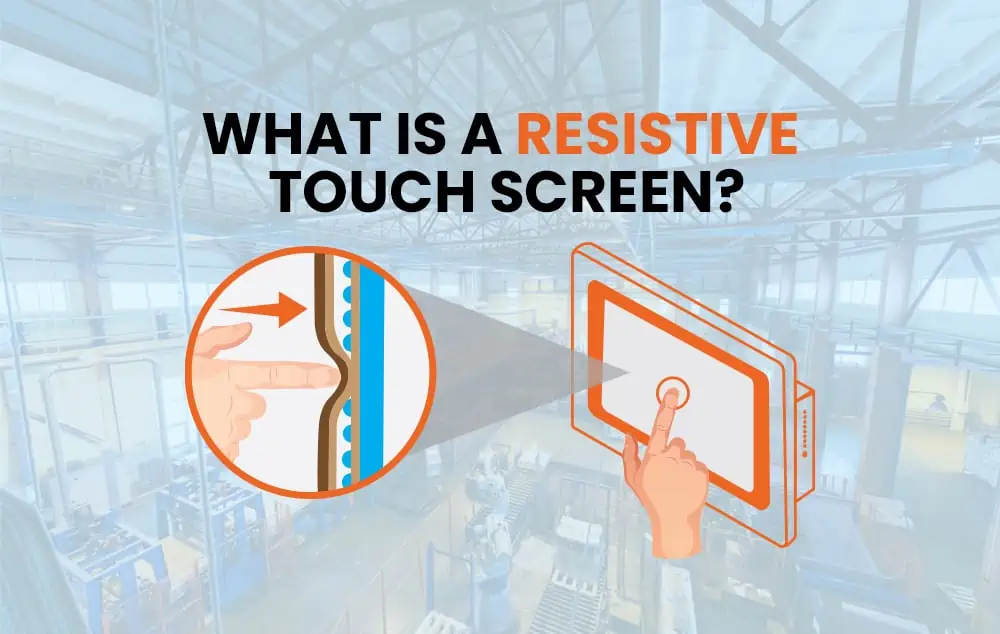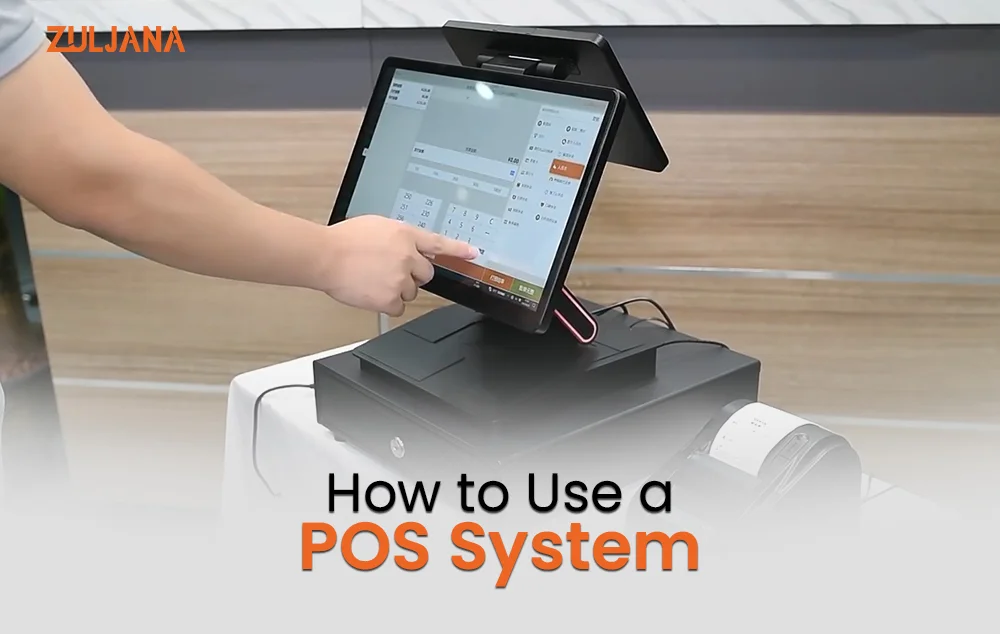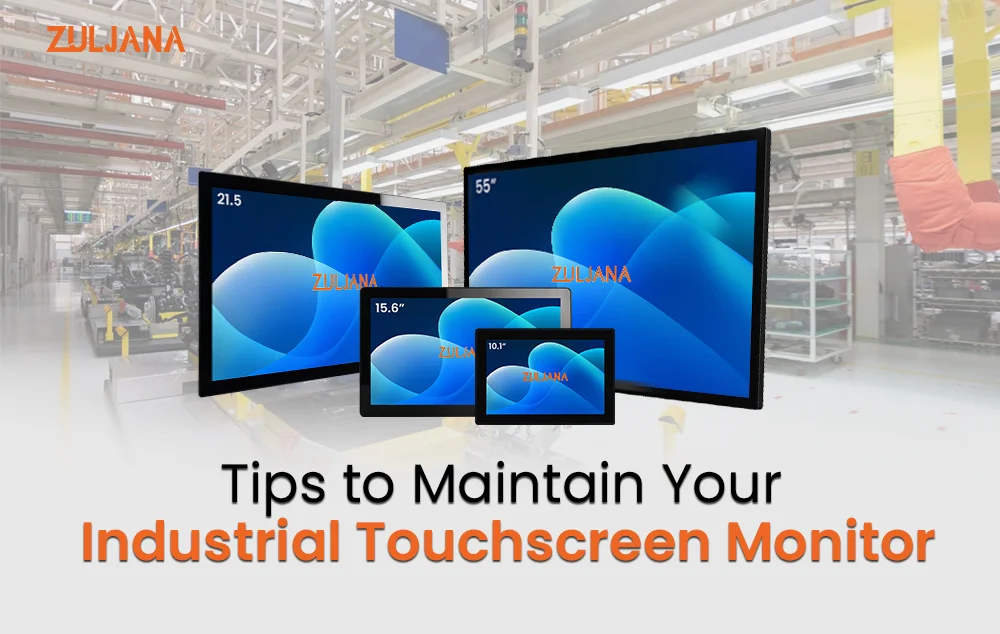In today’s digital world, we are surrounded by touchscreens. From phones and tablets to kiosks at stores, we use them every day. But do you know what type of screen these are and how they work? This guide will explain a type of touchscreen called the resistive touchscreen. Though it is one of the older technologies, it is still widely used.
How Resistive Touchscreen Work?
A resistive touchscreen is a display technology that registers input through pressure applied to the screen. It consists of two thin, flexible layers separated by a small gap. When you apply pressure to the screen, the two layers touch at the point of contact, creating a circuit. The device detects and interprets this circuit as input.
Here’s how it works step by step:
- When the screen is at rest, the two layers are not touching each other.
- When you press on the screen, the top layer bends and makes contact with the bottom layer.
- The pressure from your finger or stylus causes the layers to touch, which completes an electrical circuit.
- The screen’s controller senses where this connection happens and translates it into a touch point on the screen.
This is why you must press a bit harder on resistive touchscreens than capacitive touchscreens (the kind in most modern smartphones). You can also read industrial panel PC applications.
Types of Resistive Touchscreens used in Europe market
There are two main types of resistive touchscreens: 4-wire and 5-wire. Let’s take a look at what makes them different.
Four Wire Resistive Touchscreen
In this type, both the top and bottom layers have electrical connections. It is simpler and less expensive but not as durable. The touchscreen won’t work properly if the top layer wears out or gets damaged.
Five Wire Resistive Touchscreen
In a 5-wire resistive touchscreen, only the bottom layer detects the touch. The top layer is just for applying pressure. This makes it more reliable and long-lasting because the screen still works even if the top layer wears out.
Where Are Resistive Touchscreens Used?
In places where the durability of touchscreens is more important than everything else, you find a resistive touchscreen in action. So, here are some common places:
- ATMs: Resistive touchscreens are mostly used in ATMs because of their durability. As we all know, ATMs are used a lot, and people press the screen hard often, so the screen needs to be strong enough to handle all of it.
- POS (Point of Sale) Machines: Many POS machines have a resistive touchscreen that is strong enough to help the cashier and customer check out.
- Heavy-duty Industrial touchscreen Equipment: In factories, you see a resistive touchscreen in action because this screen can work well while workers wear gloves and have dirty hands.
- Older Mobile Devices: Before smartphones became popular, many phones and PDAs (personal digital assistants) had resistive touchscreens.
Advantages of Resistive Touchscreens
Resistive touchscreens have some unique benefits that make them useful in certain situations.
1. Can Be Used With Any Object
Here is an important thing about resistive touchscreen: you don’t need to use a bare finger on it, unlike other touchscreens. You can use it with gloves, styluses, or any other object. This makes it an ideal choice for cold-weather places, where people mostly wear gloves.
2. Affordable
Resistive touchscreens are generally cheaper to produce than capacitive touchscreens. This is why many budget devices still use them.
3. More Accurate for Stylus Input
Resistive touchscreens are often more accurate when using a stylus. This happens because the screen detects exactly where you apply pressure, which is useful for drawing or handwriting.
4. Works in Tough Environments
Resistive touchscreens are specifically designed to handle dirt, water, and rough conditions. That’s why people mostly use these screens in factories, hospitals, and any other place where durability is the top priority.
Drawbacks of Resistive Touchscreens
While resistive touchscreens have their advantages, they also come with some downsides.
- 1. Requires Pressure to Work: You have to press down on a resistive touchscreen for it to respond. This can be tiring if you need to use the screen a lot.
- 2. Less Sensitive: Resistive touchscreens are designed to withstand dirt, water, and rough conditions. That’s why they are mostly used in factories, hospitals, and other places where durability is the top priority.
- 3. Cannot Support Multi-Touch: If we talk about multiple touches, the resistive touchscreen is not able to handle them. This means this screen is not capable of zooming or can’t handle multi-finger gestures. Unlike capacitive touchscreens, resistive touchscreens do not support multi-touch gestures.
- 4. Lower Screen Quality: The extra layers in resistive touchscreens can make the display look less sharp and clear. The top layer also makes the screen more prone to scratching.
Resistive vs. Capacitive Touchscreens
To understand resistive touchscreens well, we must quickly compare them with capacitive touchscreens.
- Touch Method: If we talk about touch sense, capacitive touchscreens don’t need pressure. They detect your finger’s electrical charge, while the resistive touchscreen needs pressure to work.
- Durability: If we compare the durability of both screens, the resistive touchscreen is the winner. It can withstand a rough environment, while the capacitive screen is more sensitive.
- Multi-Touch: When it comes to multiple touches at the same time, capacitive touchscreens are the best option, while resistive touchscreens can only detect one touch at a time.
How Technology Has Evolved in Europe
As we know, capacitive touchscreens are primarily used in phones and tablets, but this does not mean resistive touchscreens have disappeared. They remain the first choice in places where durability and cost outweigh high-tech features. With technological advancements, resistive touchscreens have become more accurate and reliable. You can also read about the applications of industrial touchscreen monitors.
Maintenance of Resistive Touchscreens
If you want to keep your resistive touchscreen work well then you need to monitor its maintenance. Here are a few tips for you:
- Avoid Heavy Pressure: As we all know, this screen needs pressure to work, but pressing too hard can damage the layer. So avoid it.
- Keep It Clean: Dirt and debris can create a problem for the touchscreen to work well, so clean it regularly. Note: always use a soft cloth to clean it.
- Use a Screen Protector: Always use a screen protector to protect your screen from scratches.
Future of Resistive Touchscreens
In this modern era of touchscreen technology, resistive touchscreens still have their place. They are becoming more advanced; now, some models even try to support multi-touch. There is a high chance that we will see resistive touchscreens in action in more places as they improve, where durability is key. You can also read what a stretched bar LCD is.
FAQs
Yes, one of the main advantages of resistive touchscreens is that they can be used with gloves, styluses, or any other object. This makes them perfect for use in cold environments or industries where gloves are required, such as factories or hospitals.
The key difference lies in durability and reliability. A 4-wire resistive touchscreen uses both layers to make contact, but it can wear out quickly if the top layer is damaged. A 5-wire resistive touchscreen, on the other hand, uses only the bottom layer for detecting touches, making it more durable and reliable, even if the top layer wears out.
Resistive touchscreens remain popular due to their durability and affordability. They are ideal for use in harsh environments where durability and the ability to operate with gloves or styluses are important. They are still used in industries like manufacturing, ATMs, and Point of Sale (POS) systems.
Conclusion
Now you know what a resistive touchscreen is and how it works. While they may not be the most striking or high-tech, they are a reliable and affordable option for many uses. They can work well in tough environments and with a variety of objects, making them perfect for specific tasks.
While capacitive touchscreens dominate everyday use, resistive touchscreens also play an essential role in technology. A resistive touchscreen will likely help when you withdraw cash from an ATM or operate equipment in a factory.










